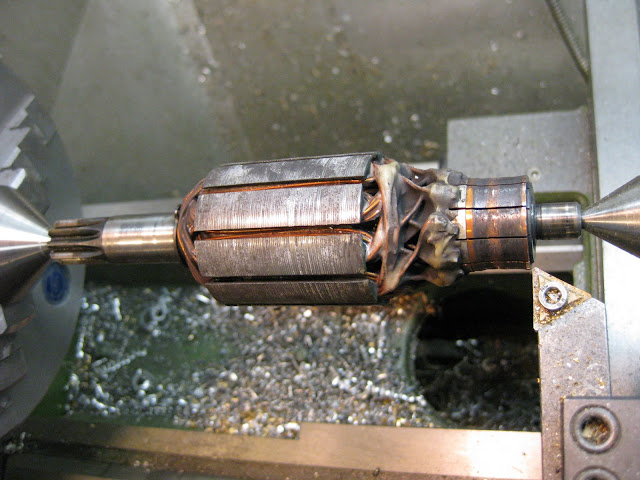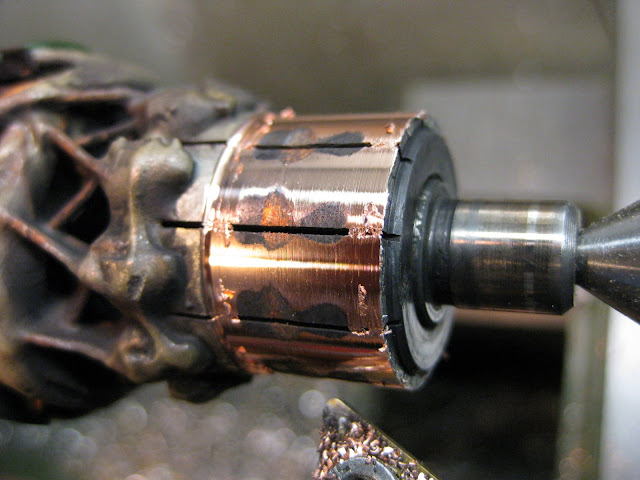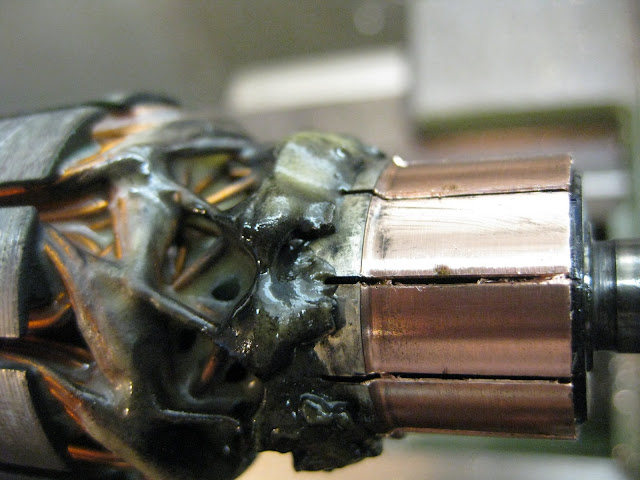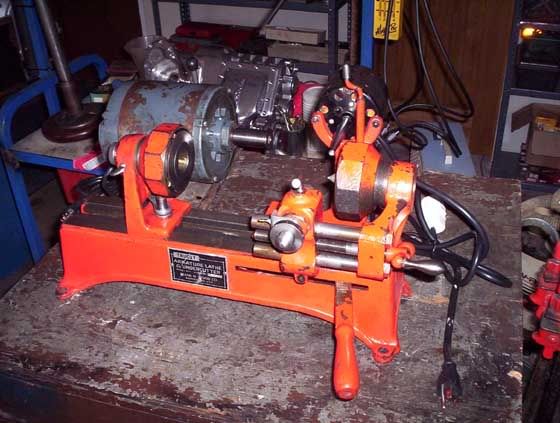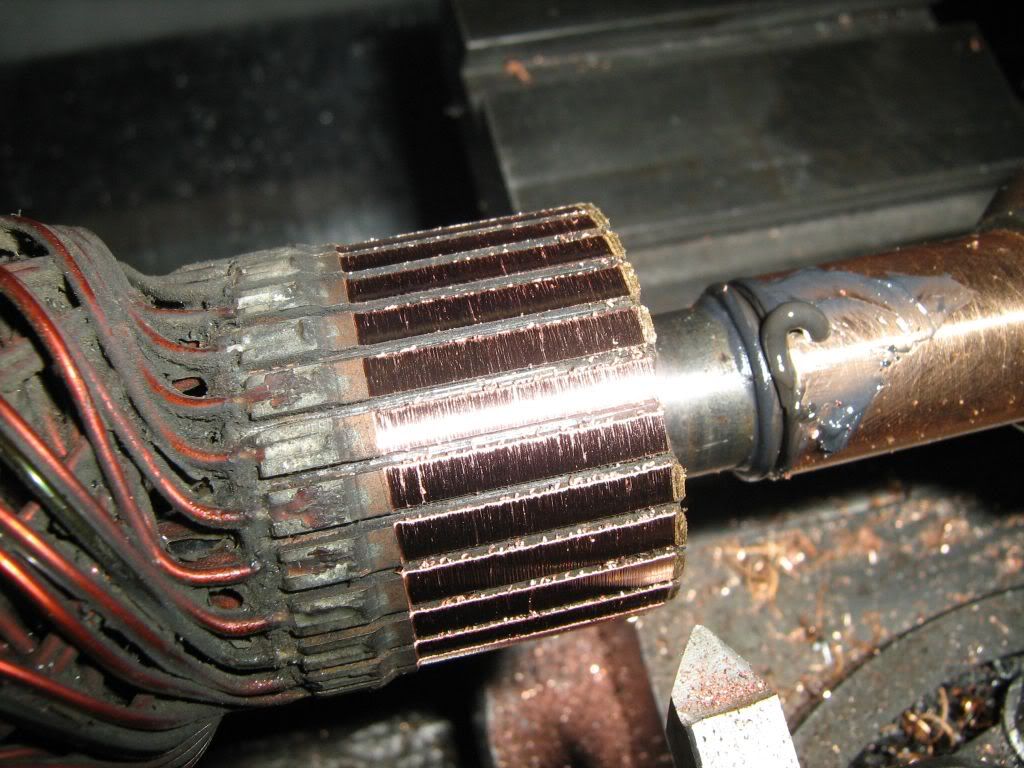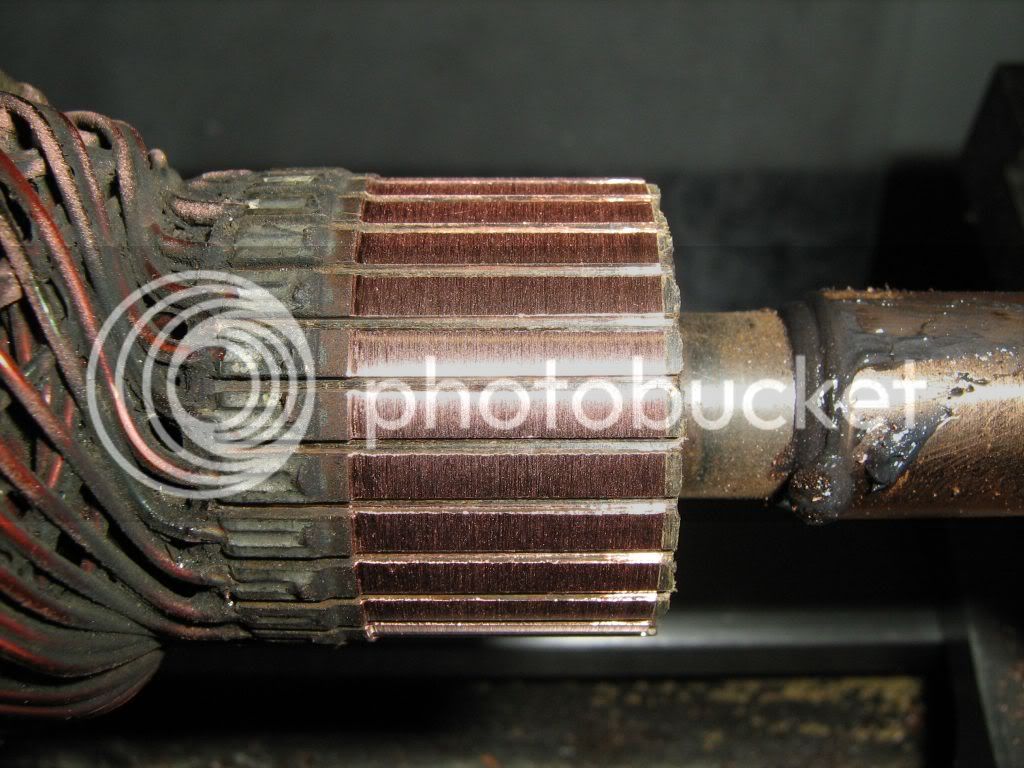Hi all, my brother has asked me to clean up the commutator on a car dynamo. I have done one before in the dim and distant past when I was young enough not to worry about things and just did them,usually got away with it too ;D Now though I have to think too much and worry alot.
I need some guidance please on the correct way to get this done. The first problem is actually holding it true. I am concerned as it is quite a heavy thing to have hanging out the chuck and it has no centre drilling on the end of the shaft to help.
Also is it best done fast or slow?
Anyone any experience of this?
Thanks
Peter.
I need some guidance please on the correct way to get this done. The first problem is actually holding it true. I am concerned as it is quite a heavy thing to have hanging out the chuck and it has no centre drilling on the end of the shaft to help.
Also is it best done fast or slow?
Anyone any experience of this?
Thanks
Peter.





